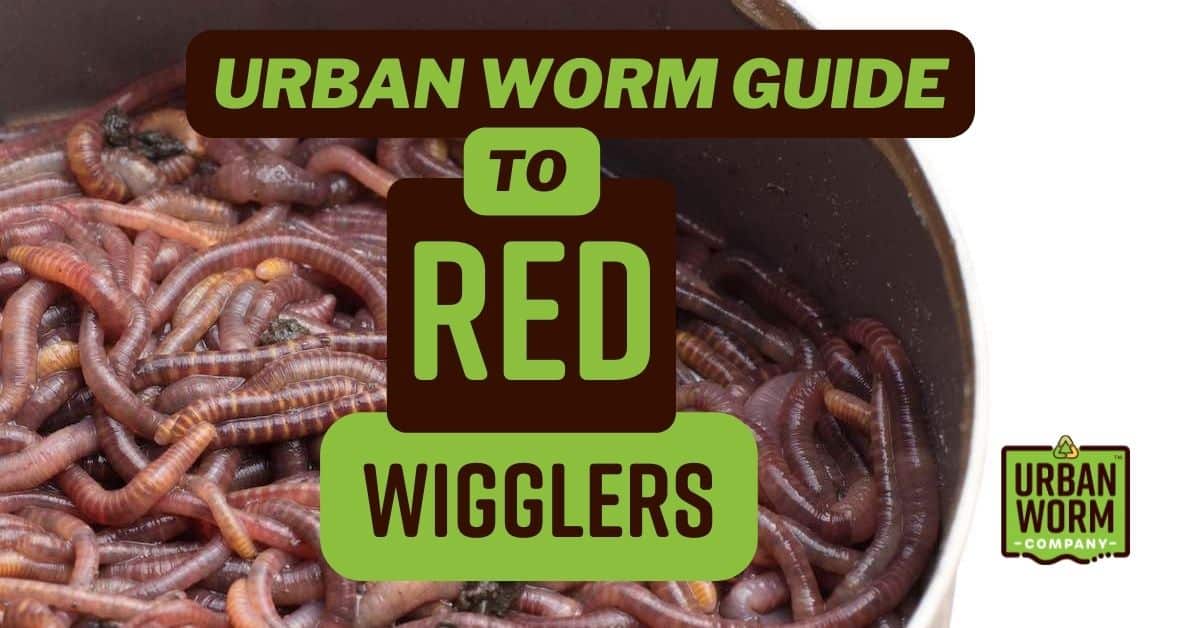Some Of Red Wiggler Express
Some Of Red Wiggler Express
Blog Article
Not known Incorrect Statements About Red Wiggler Express
Table of ContentsThe Greatest Guide To Red Wiggler ExpressThe smart Trick of Red Wiggler Express That Nobody is DiscussingAn Unbiased View of Red Wiggler ExpressThe Only Guide to Red Wiggler ExpressThe 2-Minute Rule for Red Wiggler Express
Some worm farmers really hold back food and water to simulate drought conditions and bump up cocoon production. We don't advise this for the home composter as it has the potential to exterminate way too many of your ideal worms. Since you know everything about the red worm it's time to head out and discover an excellent supplier and obtain a pound or two and start your very own worm farm.This guide will certainly present you to the red wiggler to consist of a much deeper on dive on the species and details on breeding, life process, and reproduction. We'll talk about just how to preserve red wigglers and why they should be the go-to worm for most composters. The red wiggler (binomial name: eisenia fetida) is the globe's most typical composting worm.
A research recommends that both can create hybrid offspring, a phenomenon which must otherwise be considered impossible in between the majority of worm varieties. Enjoyable reality: The "fetid" part of the binomial name refers to what some say is a smelly secretion the red wiggler uses to ward off predators. But I have actually been handling them for many years and never ever observed this! The anatomy of a red wiggler resembles that of other typical earthworms; a long-segmented body starts at the sharp head and ends at a slightly-flatted tail.
Red Wiggler Express Can Be Fun For Everyone
The gastrointestinal tract is simple, beginning at the mouth where the worm starts to consume its food prior to passing it on the vocal cords. The vocal cords is a muscle section which acts like a pump to draw food right into the mouth before pumping it out into the esophagus. The esophagus is slim and thin-walled and serves as the "waiting space" for the gizzard.
Keep in mind: This demand for grinding is why grit is recommended in a worm container. The worm features no native grinding capability so the worm depends on consumed grit to help grind its food in the gizzard. The stomach is where the first chemical malfunction of food occurs with the help of a protein-busting enzyme.

Within 42 days, these child worms will certainly get to sex-related maturation as evidenced by the emergence of the clitellum. A fully grown red wiggler can be expected to live between one to 3 years. The mighty red wiggler might in some cases be used as a lure worm for smaller sized fish or as a healthy protein resource for poultries and reptiles.
Red Wiggler Express Can Be Fun For Everyone
And as stated above, they are one of the most typical composting worm in the globe. Yet why? Well there's most likely not just one factor. Rather, a mix of expense, strength, and convenience in a wide variety of temperature levels makes it the most ideal composting worm for the majority of new vermicomposters. Red wigglers and their cocoons can endure in a wide variety of problems.
This is a common technique among worm carriers that don't want to risk having the worms sit in a hot or cool storehouse over the weekend. Worm farmers are not saving worms in a circumstance where they prepare to deliver. The worms have to be harvested from their habitat first, so growers will commonly set a Friday or Saturday deadline in order to harvest in time for a Monday shipment.
To reduce delivery expense, you might intend to see if there are any kind of neighboring "Mama and Pop" stores with a Google search. If you do not locate what you're seeking, then I invite you to take a look at worms via the Urban Worm Company! The amount of red wigglers you get ought to be exclusively dependent upon the area you have readily available for vermicomposting.
I call these the "Big 3" elements of worm bin upkeep. As stated earlier, red wigglers have a broad temperature level tolerance.
Rumored Buzz on Red Wiggler Express

For best outcomes, you want to fire for concerning 60-70% wetness degree. The easiest test for this is to squeeze a handful as hard as you can. At the perfect wetness degrees which is just under 70% that handful ought to hardly produce one decline of fluid. pH in a worm bin is quite very easy to maintain.


The European Nightcrawler, the bigger cousin of the red wiggler, is equally as starved and also makes for an excellent lure worm. However it chooses a little bit of a cooler environment than the red wiggler. The African Nightcrawler is a huge composting worm and makes a gorgeous, granular cast.
The Indian Blue is voracious, yet additionally prefers a warmer climate and it additionally shows a tendency to escape the bin. The red wiggler is a hardy worm and isn't as fussy about its environment. I like to call it the Ford Taurus of vermicomposting worms; you will not brag to your hardcore composting pals that you have them, but they will serve you well.
Red Wiggler Express for Dummies
Guaranteed active 1/2 lb of hand sorted Red Wigglers/Compost with worms (+500 worms) in different phases of life from cocoons to grow worms in their all-natural environment/bedding. Hand arranged worms reduced the disturbance of the worms therefore insuring online distribution. Red wiggler worms do not such as resonances or light.
Report this page